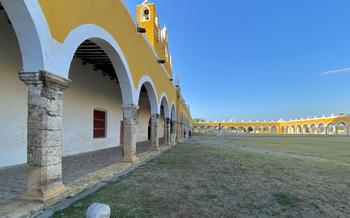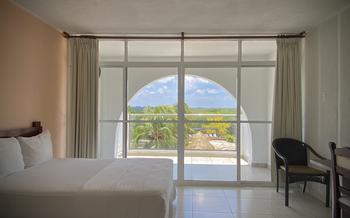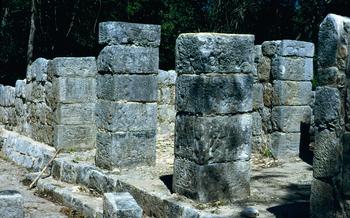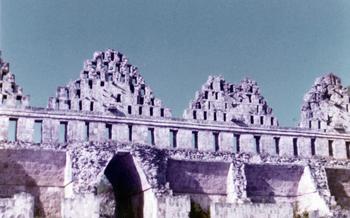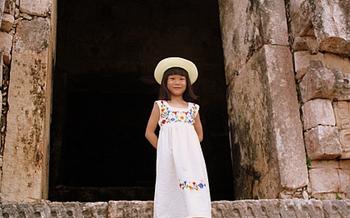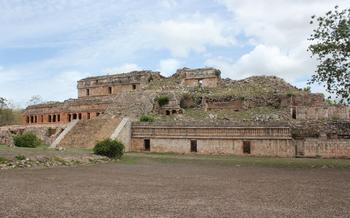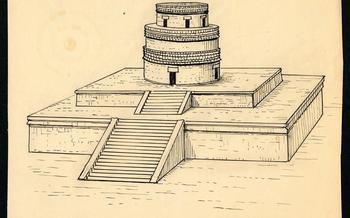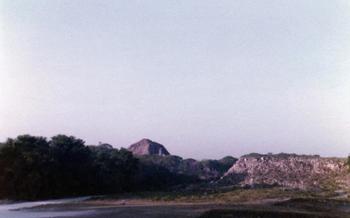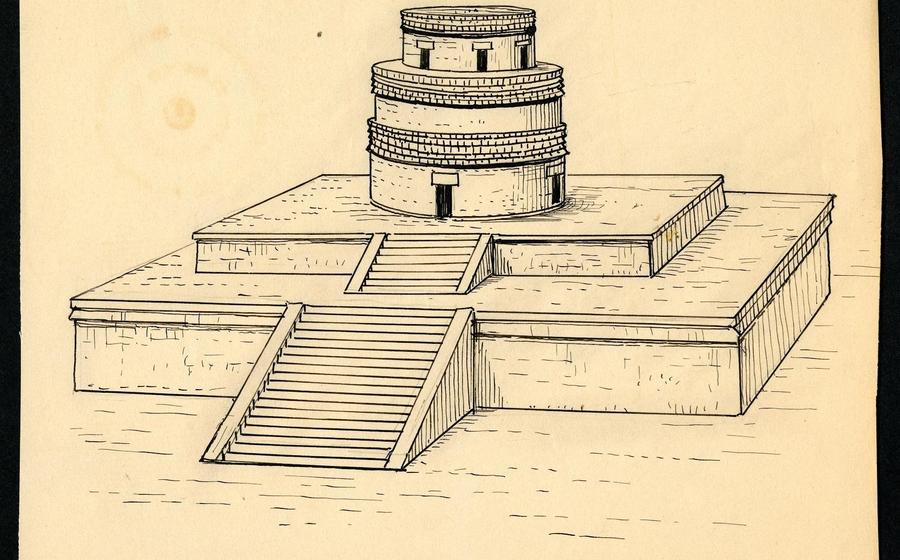
Ruta Puuc
- Chichén Itzá: An Enigmatic Legacy
- Unlocking the Past: Exploring the Ruta Puuc
- Uxmal: An Architectural Wonder
- Labná: A Hidden Gem
- Sayil: The City of Hillocks
- Kabah: City of Sacred Pathways
- Xlapak: A Glimpse into the Past
- Chacmultún: Ancient Mayan Legacy
- Exploring the Ruta Puuc: Practical Tips
- Unveiling Mayan Mysteries: Guided Tours
- Capturing the Essence of the Ruta Puuc: Photography Tips
- Local Delicacies: A Culinary Adventure
- Accommodations for Every Traveler
- Sustainable Tourism: A Responsible Approach
- Insider Tip: Uncovering Hidden Gems
Chichén Itzá: An Enigmatic Legacy
Chichén Peninsula, stands as a testament to the ingenuity and cultural heritage of this enigmatic civilization. It flourished between the 9th and 11th centuries, becoming a prominent political and religious center with a profound influence on the Maya world.
The city is renowned for its iconic structures, such as the towering pyramid of El Castillo (also known as the Temple of Kukulcan), the Temple of the Warriors, and the Great Ball Court. These marvels of ancient engineering showcase the Maya's advanced knowledge of astronomy, architecture, and urban planning.
Chichén Itzá has undergone extensive preservation efforts to protect its legacy for future generations. Archaeological research and excavations have uncovered invaluable artifacts, shedding light on the city's history, customs, and beliefs. The site's cultural significance has led to its recognition as a UNESCO World Heritage Site, attracting millions of visitors worldwide.
Chichén Itzá's allure lies in its ability to transport visitors back in time, offering a glimpse into the grandeur and complexity of ancient Maya civilization. Every stone, every glyph, every artifact tells a story, inviting us to unravel the mysteries that continue to surround this awe-inspiring city.
Unlocking the Past: Exploring the Ruta Puuc
Location
The Ruta Puuc (Hill Country Route) is a circuit of ancient Mayan cities located in the southern part of the Yucatán Peninsula, Mexico. It comprises some of the most impressive and well-preserved Mayan ruins, offering a glimpse into the rich history and culture of this ancient civilization.
Mayan Cities
The Ruta Puuc includes several significant Mayan cities, such as Uxmal, Labná, Sayil, Kabah, Xlapak, and Chacmultún. Each city boasts unique architectural features, reflecting the artistic and engineering prowess of the ancient Mayans.
Architectural Marvels
The Ruta Puuc is renowned for its distinctive architectural style, characterized by intricate carvings, elaborate facades, and corbelled arches. These architectural elements showcase the Mayans' advanced construction techniques and their profound understanding of mathematics and engineering.
Significance in Ancient Trade Routes
The Ruta Puuc was strategically located along ancient trade routes, connecting the Maya with other Mesoamerican civilizations. This region played a crucial role in the exchange of goods, ideas, and cultural influences, contributing to the overall development and prosperity of the Mayan civilization.
Uxmal: An Architectural Wonder
Uxmal, a gem nestled in the heart of the Ruta Puuc, stands as a testament to the architectural prowess of the ancient Maya. Its history is veiled in mystery, with stories and legends intertwining to create a narrative that captivates the imagination. The city flourished between 700 and 1000 AD, reaching the pinnacle of its power during the Late Classic period.
Uxmal's architecture is a symphony of stone and artistry, showcasing the Maya's mastery of construction techniques. The city's most iconic structure is the Pyramid of the Magician, a towering edifice that dominates the skyline. Its sheer size and intricate carvings evoke a sense of awe, leaving visitors spellbound.
One of the most outstanding features of Uxmal is its unique architectural style. The buildings are characterized by their graceful curves, intricate facades adorned with intricate geometric patterns, and corbelled arches, a hallmark of Mayan architecture. The Governor's Palace, with its imposing façade and elaborate decorations, is a prime example of this distinctive style.
Uxmal's cultural significance extends beyond its architectural marvels. It was a thriving center of trade and commerce, serving as a hub for the exchange of goods and ideas. The city's strategic location, at the crossroads of important trade routes, contributed to its economic prosperity and cultural influence.
Labná: A Hidden Gem
Nestled within the heart of the Ruta Puuc, Labná remains an archaeological marvel that captivates visitors with its unique charm and enigmatic allure. Its architectural mastery is evident in the grand structures that have withstood the test of time, providing a glimpse into the advanced civilization that once thrived here.
The Palace of Labná, an architectural masterpiece, showcases the city's exceptional craftsmanship. Its elaborately carved friezes depict intricate scenes of Mayan life, narrating tales of their customs and beliefs. The Governor's Palace, adorned with a series of finely preserved columns, further demonstrates the prowess of Labná's architects and builders.
Beyond these imposing structures, Labná unveils a hidden gem: the Arch of Labná. This iconic archway, meticulously crafted from limestone blocks, stands as a testament to the engineering skills of the Maya. Its intricate carvings, depicting an assortment of motifs and human figures, captivate the imagination.
Labná's significance extends beyond its architectural wonders. The city played a crucial role in the ancient Mayan trade routes, serving as a vital hub for the exchange of goods and ideas. Its strategic location facilitated the movement of precious commodities, such as jade and obsidian, throughout the region.
As you explore Labná, allow yourself to be captivated by its mystical aura and immerse yourself in the rich history that unfolds before you. This hidden gem of the Ruta Puuc offers an unforgettable encounter with the brilliance and legacy of the ancient Maya.
Sayil: The City of Hillocks
Historical Background
Sayil, meaning "Place of the Ants," is a captivating ancient Mayan city located in the heart of the Ruta Puuc. It flourished during the Terminal Classic period (800-1000 AD), showcasing a remarkable blend of architectural innovation and cultural significance. Sayil's strategic location along ancient trade routes contributed to its rise as a major trading hub, further enhancing its status and influence in the region.
Major Attractions
The city is renowned for its towering pyramids, ornate palaces, and intricate carvings that adorn its buildings. One of the most striking structures is the Palacio de los Gobernadores, showcasing an impressive facade adorned with intricate stucco decorations and sculptures depicting mythical creatures and historical events. The Gran Plaza, the city's central gathering place, is flanked by various buildings, including the Templo de las Columnas, featuring a unique row of carved columns.
Distinctive Architectural Elements
Sayil's architecture exhibits a distinctive style characterized by the use of corbelled vaults, creating spacious interiors and allowing for impressive spans of roofing without the need for columns. The city's buildings are adorned with elaborate friezes and moldings, showcasing intricate geometric patterns and representations of everyday life, nature, and deities. Sayil's architecture reflects a harmonious blend of functionality and aesthetics, mirroring the advanced engineering and artistic prowess of the ancient Maya.
Cultural Significance
Sayil's cultural importance extends beyond its architectural marvels. The city was a thriving center of religious rituals, political power, and economic activities. It served as a significant node in the ancient Maya trade network, facilitating the exchange of goods and ideas between various regions. Sayil's strategic location also made it a crucial defensive stronghold, protecting the Puuc region from potential invasions.
Kabah: City of Sacred Pathways
Kabah is another significant city along the Ruta Puuc, renowned for its impressive architecture and historical significance. It flourished during the Classic period and played a pivotal role in the region's political and economic landscape. The city's name translates to "the hand-grasped water," reflecting its importance as a water source for the ancient Maya.
Kabah's architectural marvels include the Codz Poop (Palace of the Masks), a remarkable structure adorned with hundreds of stucco masks depicting the rain god Chaac. These masks, each with a unique expression, symbolize the city's dependence on rainfall for agriculture and sustenance. The Great Pyramid is another notable monument, showcasing intricate carvings and a unique arch known as the Kabah Arch. This arch, formed by interlocking stones without mortar, demonstrates the Maya's advanced construction techniques.
Kabah's historical significance extends beyond its architecture. The city served as a crucial stopover along ancient trade routes, facilitating the exchange of goods and ideas between the Maya lowlands and highlands. It also played a pivotal role in the political and religious landscape of the region, as evidenced by the presence of several royal tombs and ceremonial structures.
The city's cultural heritage is deeply intertwined with its history and architecture. The intricate carvings and sculptures found throughout Kabah provide valuable insights into the Maya's beliefs, rituals, and daily life. These artistic expressions showcase the city's cultural significance and offer a glimpse into the rich cultural tapestry of the ancient Maya civilization.
Xlapak: A Glimpse into the Past
Nestled amidst the lush vegetation of the Puuc region, Xlapak lies as a testament to the enduring legacy of the ancient Maya civilization. This archaeological site, often overlooked by visitors to the more famous Chichén Itzá, offers a unique glimpse into the past and provides valuable insights into the daily life of the ancient Maya people.
Archaeological excavations at Xlapak have revealed a wealth of well-preserved structures, including residential complexes, ceremonial centers, and a ball court. The site also boasts an impressive array of intricate carvings and sculptures, which depict various scenes from Mayan mythology and history, offering a glimpse into the beliefs and practices of this ancient civilization.
Xlapak holds particular significance for its role as a trading hub in the ancient Maya world, facilitating the exchange of goods and cultural influences between different regions. The site's strategic location along a major trade route allowed merchants from various parts of Mesoamerica to converge and engage in commerce.
Despite its historical significance, Xlapak remains relatively unexplored compared to other sites in the Ruta Puuc. This seclusion has contributed to its allure, offering visitors an opportunity to experience the enigmatic charm of a lesser-known Mayan city and gain a deeper understanding of the diverse cultural heritage of the region.
Chacmultún: Ancient Mayan Legacy
Chacmultún, an ancient Mayan city nestled in the heart of the Ruta Puuc, unveils its rich history through its well-preserved ruins. Founded around 600 AD, Chacmultún flourished as a significant agricultural and trading center. Its strategic location facilitated connections with other Mayan cities, enabling cultural exchange and fostering economic growth.
As you explore the archaeological site, admire the intricate carvings adorning the structures, providing glimpses into the city's past. The impressive Central Acropolis showcases a collection of temples, palaces, and plazas, reflecting the city's administrative and religious importance. The Temple of the Masks, a highlight of the site, features finely crafted masks that once adorned the building's facade, offering a glimpse into the city's artistic prowess.
Chacmultún's legacy extends beyond its architectural marvels. The city's role in the development of Maya hieroglyphics is significant, with numerous stelae and altars bearing inscriptions that shed light on the city's history and culture. These inscriptions provide valuable insights into the Maya civilization's political, social, and religious structures.
Ongoing excavations at Chacmultún continue to unearth new discoveries, deepening our understanding of this ancient city. By piecing together the fragments of the past, archaeologists and historians are reconstructing the vibrant tapestry of Chacmultún's history, revealing its significant contributions to the Maya civilization.
Exploring the Ruta Puuc: Practical Tips
Best time to visit: The dry season, from November to April, offers the most comfortable weather for exploring the Ruta Puuc. Temperatures are pleasant, with minimal rainfall and high chances of clear skies.
Transportation options: The Ruta Puuc is easily accessible by rental car, with well-maintained roads connecting the various sites. If you prefer not to drive, organized tours are available from Mérida, offering transportation, guided visits, and lunch options.
Packing essentials: Pack comfortable clothing and sturdy shoes, as you'll be doing a lot of walking on uneven terrain. Don't forget a hat, sunscreen, and sunglasses to protect yourself from the tropical sun. Bring a camera to capture the stunning architecture and natural beauty of the region.
Safety considerations: The Ruta Puuc is generally a safe area, but it's always advisable to take precautions. Be aware of your surroundings, especially when exploring remote sites. Keep valuables secure and avoid carrying large amounts of cash.
Unveiling Mayan Mysteries: Guided Tours
Unveiling Mayan Mysteries: Guided Tours
Embarking on a guided tour of the Ruta Puuc is an enriching experience that enhances your understanding and appreciation of this ancient civilization. Knowledgeable guides provide insights into the history, culture, and significance of each site, bringing the ruins to life.
Benefits of Guided Tours
-
In-depth Knowledge: Guides share their expertise, offering historical context and cultural nuances that you might miss on your own.
-
Customized Itineraries: Tours can be tailored to your interests and time constraints, ensuring you see the most relevant sites.
-
Local Insights: Guides often have personal connections to the region, sharing unique stories and perspectives.
-
Safety and Convenience: Tours take care of transportation and logistics, allowing you to relax and focus on the experience.
Types of Tours Available
-
Group Tours: Suitable for budget-conscious travelers, these tours offer a shared experience with other visitors.
-
Private Tours: Ideal for those seeking personalized attention and a tailored itinerary, private tours provide flexibility and exclusivity.
-
Cultural Tours: These tours focus on the cultural aspects of the region, including visits to local villages and markets.
-
Archaeological Tours: Designed for history enthusiasts, these tours delve deeper into the archaeological significance of the Ruta Puuc.
Recommended Tour Operators
-
Mayan Heritage Tours: Renowned for their knowledgeable guides and personalized service.
-
Yucatan Adventures: Offers a range of tours, from budget-friendly options to luxury packages.
-
Explore Mexico Tours: Specializes in small-group tours with a focus on sustainability.
Insider Tips for Choosing the Best Tour
-
Read Reviews: Check online reviews and recommendations to find reputable tour operators.
-
Consider Your Interests: Choose a tour that aligns with your priorities, whether it's history, culture, or photography.
-
Ask Questions: Don't hesitate to ask tour operators about their expertise, itinerary, and safety measures.
-
Book in Advance: To secure your spot, especially during peak season, book your tour well in advance.
Capturing the Essence of the Ruta Puuc: Photography Tips
The Ruta Puuc is a treasure trove for photographers, offering an array of stunning landscapes, ancient ruins, and vibrant local life. To capture the essence of this captivating region, here are some essential photography tips:
-
Ideal Camera Settings: Use a wide-angle lens (16-35mm) to capture the grandeur of the ancient structures and the surrounding landscapes. Set your camera to aperture priority mode (A/Av) to control the depth of field, ensuring that both the foreground and background are sharp.
-
Effective Composition Techniques: Experiment with different composition techniques to create visually appealing images. Use leading lines, such as pathways or columns, to draw the viewer's eye into the photograph. Incorporate foreground elements, such as vegetation or architectural details, to add depth and interest.
-
Lighting Considerations: The best time to photograph the Ruta Puuc is during the golden hours (sunrise and sunset), when the warm light casts a magical glow on the ancient ruins. Use a polarizing filter to reduce glare and enhance the colors of the sky and vegetation.
-
Post-Processing Techniques: Take advantage of post-processing software to enhance your images and bring out the best in your compositions. Adjust the white balance, exposure, and contrast to achieve the desired look and feel. Experiment with different editing techniques to add a personal touch to your photographs.
Local Delicacies: A Culinary Adventure
The Ruta Puuc region offers a tantalizing culinary journey, where you can savor the authentic flavors of Mayan cuisine, influenced by fresh local ingredients and traditional cooking techniques. Indulge in the region's signature dish, cochinita pibil, a slow-roasted pork delicacy marinated in achiote and wrapped in banana leaves. Don't miss panuchos, a fried tortilla topped with refried beans, shredded turkey, and pickled red onions. For a refreshing treat, try marquesitas, crispy rolled crepes filled with Edam cheese and a choice of sweet or savory fillings.
For a truly immersive experience, visit the bustling local markets, where you can witness the vibrant colors and aromas of fresh produce, spices, and local delicacies. Engage with the friendly vendors, learn about the ingredients, and sample some of the local fruits and snacks. You can also opt for cooking classes to learn the art of Mayan cuisine, creating delicious dishes using traditional methods and fresh local ingredients. Immerse yourself in the culinary delights of the Ruta Puuc, where each bite tells a story of Mayan heritage and cultural traditions.
Accommodations for Every Traveler
Budget-friendly Options:
For budget-conscious travelers, the Ruta Puuc offers several hostels and guesthouses with basic but comfortable accommodations. These establishments often provide shared dormitories or private rooms at affordable rates. They also serve as great places to meet fellow travelers and share experiences.
Mid-range Hotels for Comfort:
Mid-range hotels in the region offer a blend of comfort and convenience. These hotels typically feature private rooms with modern amenities, such as air conditioning, private bathrooms, and Wi-Fi. They also often have onsite restaurants and swimming pools, providing a more comfortable and relaxing stay.
Luxury Resorts for an Indulgent Stay:
For those seeking an indulgent experience, the Ruta Puuc boasts several luxury resorts that offer unparalleled comfort and amenities. These resorts often feature spacious rooms with private balconies or patios, top-notch dining options, and world-class spas. They also provide access to exclusive experiences, such as private cenote tours and guided archaeological excursions.
Tips on Finding the Perfect Place to Stay:
For the best accommodation recommendations, consider the following tips:
-
Book in advance, especially during peak season, to secure your preferred choice.
-
Consider the location of your accommodation in relation to the sites you plan to visit.
-
Look for hotels or guesthouses that offer amenities important to you, such as a swimming pool or Wi-Fi.
-
Check online reviews and ratings to get an idea of the quality of service and facilities.
Sustainable Tourism: A Responsible Approach
As we venture through the Ruta Puuc, it's crucial to embrace sustainable tourism practices to preserve this ancient legacy for generations to come. Here's how you can contribute:
-
Tread Lightly: Respect the fragile ecosystem by staying on designated trails, minimizing your impact on the environment, and avoiding disturbing wildlife.
-
Reduce, Reuse, Recycle: Minimize waste by carrying a reusable water bottle, using refillable containers, and properly disposing of trash in designated bins.
-
Support Local Communities: Choose locally-owned businesses, purchase souvenirs from artisans, and savor regional cuisine to support the local economy and empower the community.
-
Educate Yourself: Learn about Mayan culture, history, and conservation efforts to appreciate the significance of these ancient sites and contribute to their preservation.
-
Respect Cultural Heritage: Be mindful of local customs and traditions, and ask permission before photographing people or sacred sites to show respect for the local culture.
By embracing sustainable tourism practices, you become part of the solution, ensuring that the Ruta Puuc remains a vibrant and awe-inspiring destination for years to come.
Insider Tip: Uncovering Hidden Gems
Beyond the prominent Mayan cities along the Ruta Puuc, there lie lesser-known gems waiting to be discovered. These hidden treasures offer a glimpse into the region's rich history and culture, often without the crowds of tourists. To truly immerse yourself in the local experience, consider hiring a knowledgeable guide from a local community. These guides can lead you to ancient ruins, secluded cenotes, and hidden caves that are not easily accessible to the average traveler. Embark on off-the-beaten-path adventures, such as hiking through the lush jungle or exploring underground rivers, for a truly unforgettable experience. Keep an eye out for secret spots that offer stunning photo opportunities, capturing the essence of the Ruta Puuc in all its glory.
